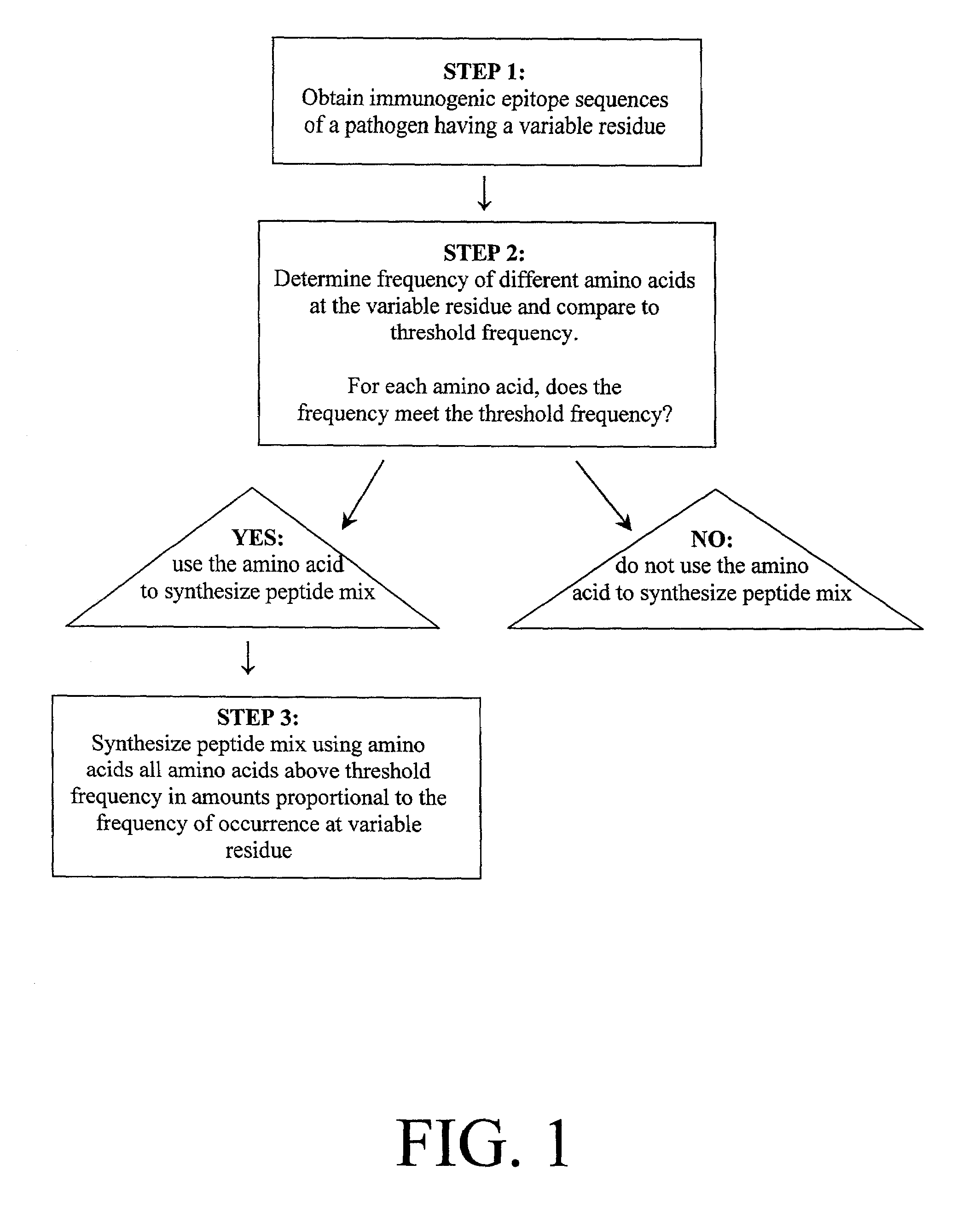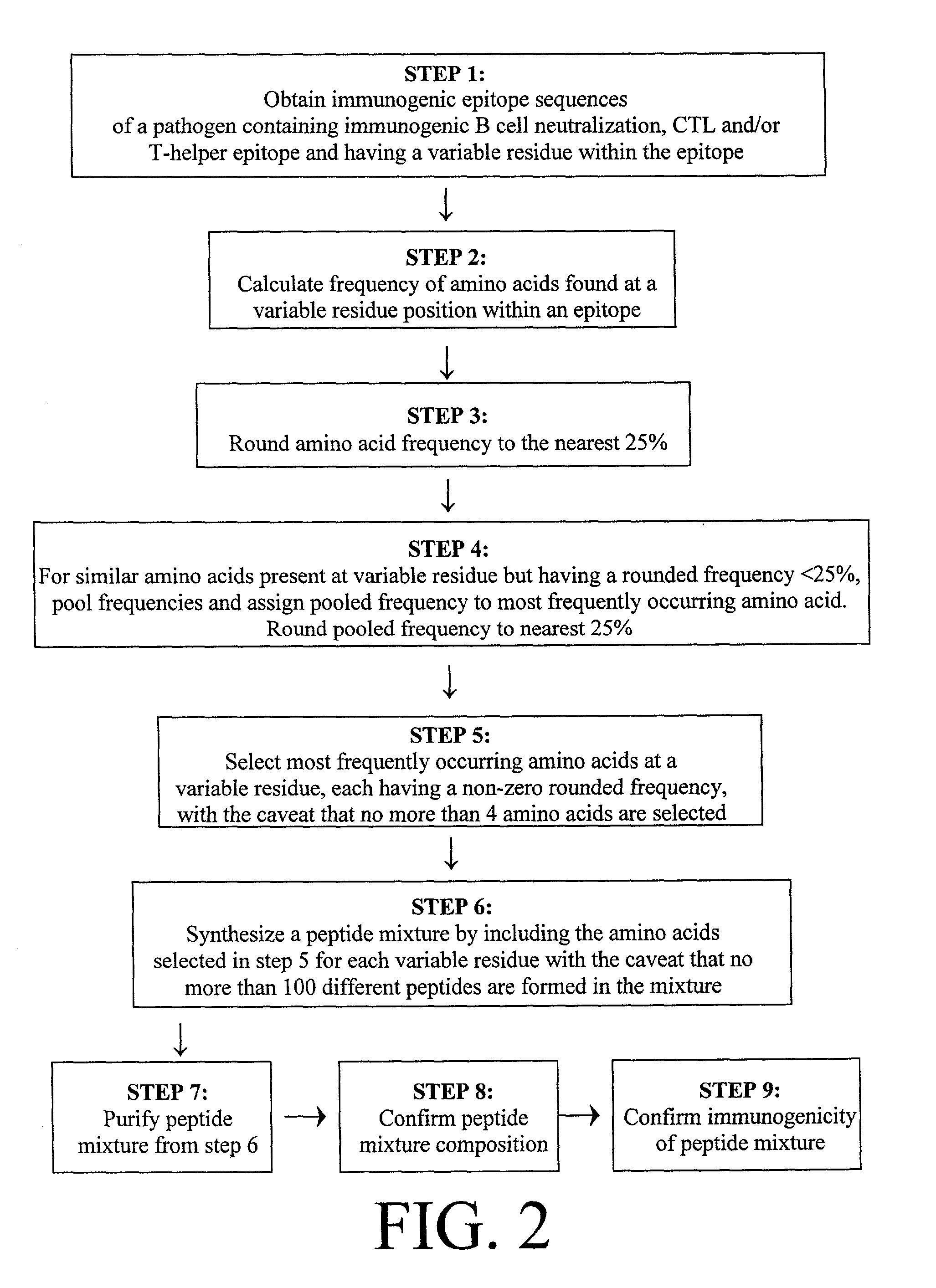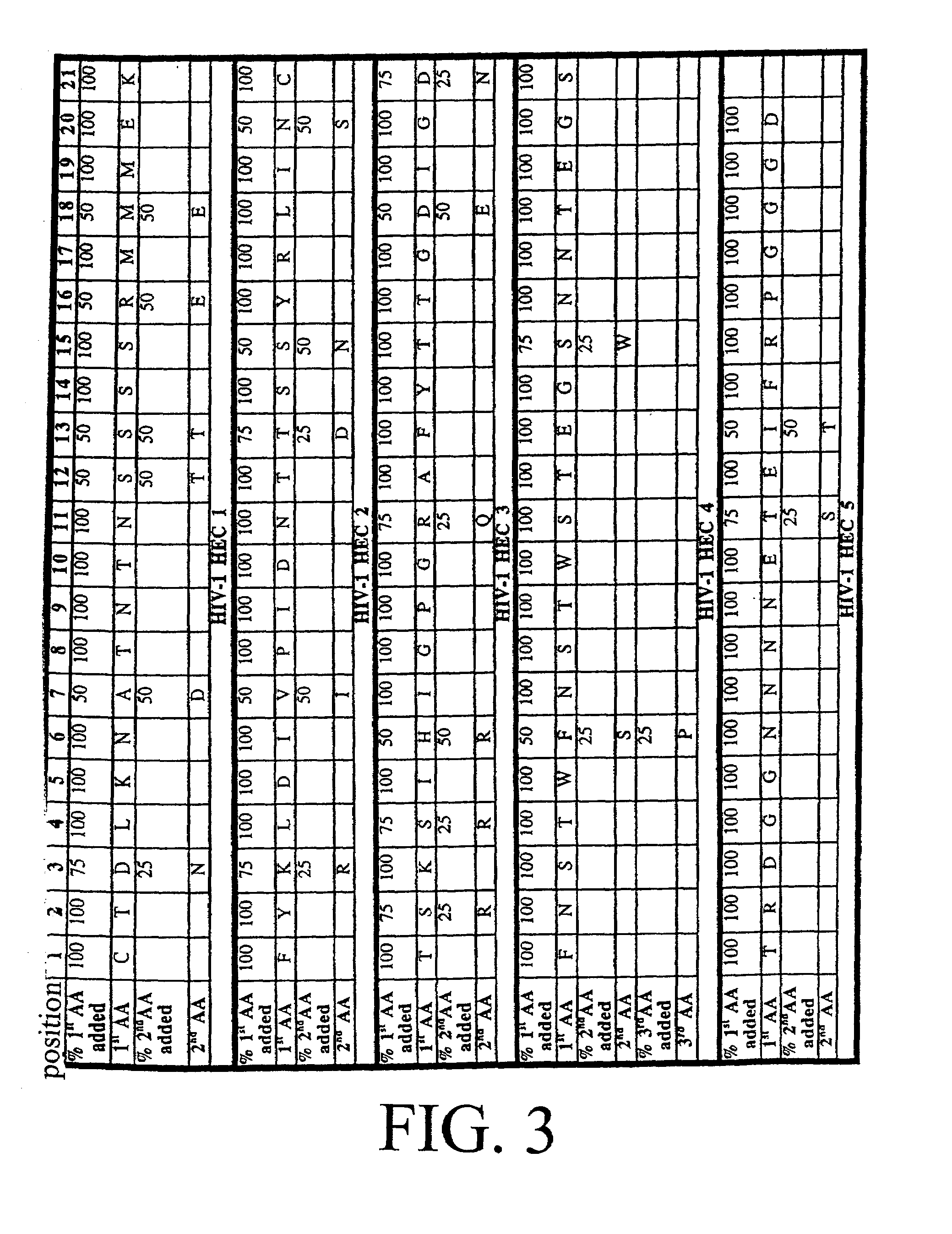Immunogenic formulation and process for preparation thereof
- Summary
- Abstract
- Description
- Claims
- Application Information
AI Technical Summary
Benefits of technology
Problems solved by technology
Method used
Image
Examples
Example
Example 1
HECs Based on HIV-1
[0114]Epitope protein sequences were obtained from the Human Retroviruses and AIDS database (Los Alamos, 1998). Based on the sequence data, five regions of the HIV-1 envelope glycoprotein (gp120) are recognizable as hypervariable areas. These five hypervariable regions include antibody neutralizing, CTL, and / or T helper cell epitopes (HIV Molecular Immunology Database, 1998).
[0115]The possible amino acids for each position along a neutralization epitope were determined from sequence information of in vivo isolates of HIV-1 clade B strains and the sequence information for each epitope was aligned and evaluated. Subsequently, some amino acid coupling steps in the synthesis of the neutralizing epitope were performed with a mixture of appropriate amino acids as determined from the observed sequence data. This process was repeated at each amino acid coupling step in the synthesis. Thus, in a single synthesis, a mixture of peptides representing all the observed...
Example
Example 2
HECs Based on Hepatitis C Virus Epitopes
[0123]Two HECs against the two hypervariable regions of hepatitis C virus (HCV) were designed according to the invention. Sequences from in vivo isolates of the viruses were obtained from databases and peer-reviewed scientific literature and the epitopes of interest were aligned. The proportions of amino acids added at individual amino acid coupling steps were then determined according to the guidelines established by the subject invention by rounding amino acid frequencies to the nearest 25% when determining the amino acids to include at a variable residue. FIG. 9 illustrates the amino acids appearing at different positions within the peptide mixture. The peptide mixture was synthesized using standard Fmoc chemistry.
[0124]In particular, it can be seen in HCV HEC-1 of FIG. 9 that a 24-mer was formed having equal amounts of tyrosine (Y) and histidine (H) at residue 4, equal amounts of leucine (L) and phenylalanine (F) at position 17, e...
Example
Example 3
HECs Based on Influenza Virus Epitopes
[0125]Many years of research on influenza have yielded important information that makes the design of HECs based on variation among influenza viruses possible. This data comes from the routine procedures that organizations such as the WHO and CDC have put in place to identify the variants expected to appear during the next year. Briefly, wild isolates of influenza are obtained from various hosts around the world. After they are identified by type (A or B), they are screened against ferret anti-influenza antisera to identify strains that are cross-reactive, and therefore will be protected against by the current influenza vaccine. They are then further screened against a panel of ferret antisera to confirm that the pattern of reactivity is the same. This assures that point mutations have not occurred. In each year, the vast majority of flu strains are antigenically identical. There are always a few strains, however, that produce unique re...
PUM
| Property | Measurement | Unit |
|---|---|---|
| Fraction | aaaaa | aaaaa |
| Fraction | aaaaa | aaaaa |
| Frequency | aaaaa | aaaaa |
Abstract
Description
Claims
Application Information
 Login to View More
Login to View More - R&D
- Intellectual Property
- Life Sciences
- Materials
- Tech Scout
- Unparalleled Data Quality
- Higher Quality Content
- 60% Fewer Hallucinations
Browse by: Latest US Patents, China's latest patents, Technical Efficacy Thesaurus, Application Domain, Technology Topic, Popular Technical Reports.
© 2025 PatSnap. All rights reserved.Legal|Privacy policy|Modern Slavery Act Transparency Statement|Sitemap|About US| Contact US: help@patsnap.com



